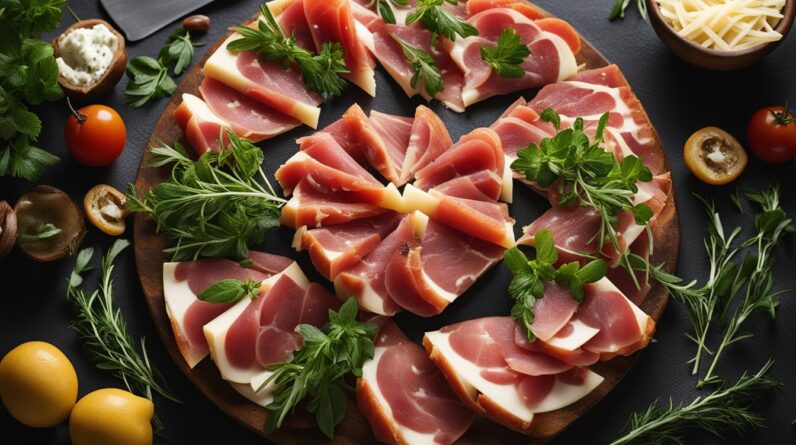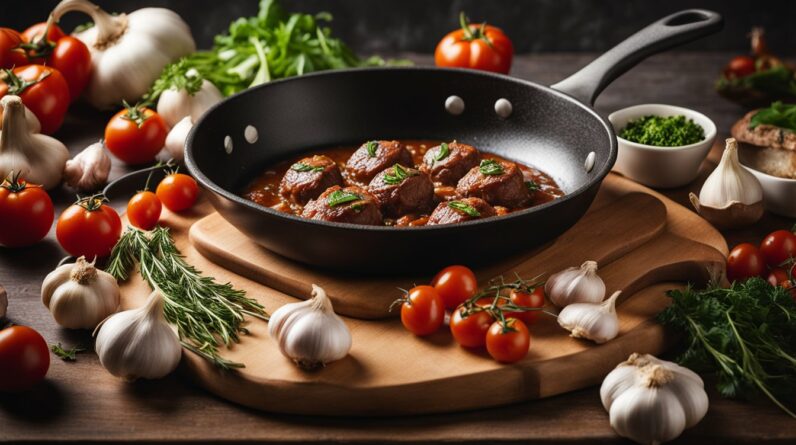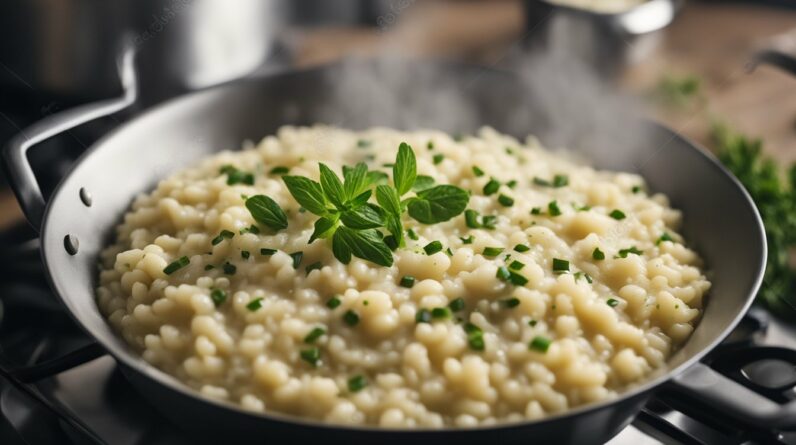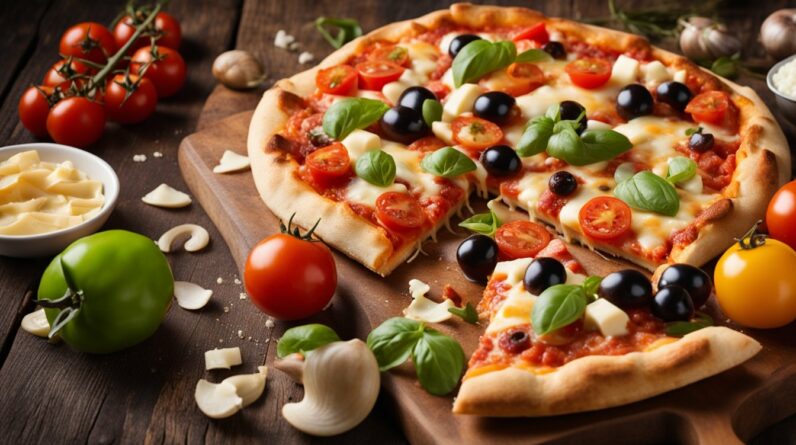In this article, you’ll discover a delicious and timeless Italian recipe: Ragu Alla Bolognese with Homemade Pasta. Italian cooking has always been known for its rich and flavorful dishes, and this classic recipe is no exception. Ragu Alla Bolognese is a meat-based sauce made with ground beef or veal, tomatoes, onions, carrots, celery, and wine. It’s traditionally served with tagliatelle pasta, and it’s a dish that will transport you straight to the heart of Italy with every bite. Get ready to embark on a culinary adventure and learn how to recreate this beloved Italian dish in the comfort of your own home.
Classic Italian Recipe: Ragu Alla Bolognese with Homemade Pasta
If you’re a fan of hearty and flavorful Italian cuisine, then you can’t go wrong with a classic Ragu Alla Bolognese. This meat-based sauce originated in Bologna, Italy, and has been enjoyed by countless people around the world. Made with ground beef or veal, tomatoes, onions, carrots, celery, and a dash of wine, this sauce is traditionally served with tagliatelle pasta. In this article, we’ll take you through the step-by-step process of making this delicious dish at home, along with some tips, variations, and historical background.
Ingredients
Before we dive into the preparation, let’s go over the list of ingredients that you’ll need to make Ragu Alla Bolognese:
- Ground beef or veal
- Tomatoes
- Onions
- Carrots
- Celery
- Red or white wine
- Olive oil
- Salt
- Black pepper
- Milk
- Freshly grated Parmesan cheese
- Tagliatelle pasta
Now that we have everything we need, let’s get started with the preparation.
Preparation
- Start by finely chopping the onions, carrots, and celery. These aromatic vegetables will add depth of flavor to the sauce.
- Heat some olive oil in a large saucepan over medium heat. The olive oil provides a base for sautéing the vegetables.
- Add the chopped onions, carrots, and celery to the saucepan and sauté until they become soft and translucent. This step helps to release their flavors and create a savory base for the sauce.
- Once the vegetables are softened, add the ground beef or veal to the saucepan and cook until it browns. Make sure to break up any clumps of meat with a spoon.
- Pour in the red or white wine and let it simmer until it evaporates. This step helps to enhance the flavors and richness of the sauce.
- Add the tomatoes to the saucepan, breaking them up with a spoon. This adds a delightful tanginess and sweetness to the sauce.
- Season the sauce with salt and black pepper according to your taste preferences. Remember, you can always adjust the seasoning later if needed.
- Reduce the heat to low and let the sauce simmer for at least 2 hours. This long cooking time allows the flavors to meld together and creates a rich, hearty sauce.
- After the sauce has simmered for a couple of hours, stir in some milk and let it simmer for an additional 30 minutes. The milk helps to balance the acidity of the tomatoes and adds a creamy touch to the sauce.
- While the sauce is simmering, boil water in a separate pot and cook the tagliatelle pasta according to the package instructions. Make sure to cook the pasta until it is al dente, or slightly firm to the bite.
- Once the pasta is cooked, drain it and toss it with the Ragu Alla Bolognese sauce. The pasta absorbs the flavors of the sauce, creating a delightful combination of textures and tastes.
- Finally, serve the dish with a generous sprinkle of freshly grated Parmesan cheese on top. The grated cheese adds a salty, nutty flavor that complements the sauce perfectly.
Tips
To help you achieve the best results when making Ragu Alla Bolognese at home, here are a few tips to keep in mind:
- Use a mix of beef and pork for a richer flavor: While the traditional recipe calls for ground beef or veal, you can add some ground pork to the mix for an extra layer of flavor.
- Choose ripe and juicy tomatoes for the best sauce: The quality of the tomatoes plays a significant role in the flavor of the sauce. Opt for ripe, juicy tomatoes for the best results.
- Simmer the sauce for a longer time enhances the flavors: The longer you let the sauce simmer, the more time the flavors have to meld together. Consider simmering for more than 2 hours if you have the time.
- Be generous with the Parmesan cheese, it adds a delicious touch: Don’t be afraid to sprinkle a generous amount of freshly grated Parmesan cheese on top of the dish. It adds a delightful salty and nutty flavor.
- You can make the Ragu Alla Bolognese in advance and refrigerate it for up to 3 days: If you’re planning ahead or want to save time, you can make the sauce in advance and refrigerate it for up to 3 days. This allows the flavors to intensify even further.
- Leftover sauce can be frozen for up to 3 months: If you have leftovers or want to make a big batch, you can freeze the sauce for later use. It will keep well in the freezer for up to 3 months, giving you a quick and delicious meal whenever you need it.
History of Ragu Alla Bolognese
Ragu Alla Bolognese has a rich history dating back to the 18th century and originates from Bologna, Italy. It is considered one of the classic Italian meat-based sauces and has gained popularity worldwide. The traditional recipe was created as a way to use inexpensive cuts of meat, such as beef or veal, to create a flavorful and satisfying dish. It was traditionally served with tagliatelle or other fresh egg pasta, which was readily available in the region.
Over the years, variations of Ragu Alla Bolognese have emerged in different regions of Italy, each adding their own unique twist to the recipe. Despite these variations, the essence of the dish remains the same – a rich, meaty sauce that pairs perfectly with pasta.
Variations of Ragu Alla Bolognese
While the classic Ragu Alla Bolognese recipe is delicious on its own, there are also variations that offer a slightly different taste experience. Here are a few popular variations:
- Ragu alla Napoletana: This version of the sauce uses a combination of pork and veal, along with a tomato-based sauce. The inclusion of pork adds a rich and savory flavor to the dish.
- Ragu alla Barese: Originating from the Puglia region, this variation of Ragu Alla Bolognese adds grilled sausage and ricotta cheese to the sauce. The sausage provides a smoky and slightly spicy kick, while the ricotta adds a creamy and indulgent touch.
- Ragu alla Romana: This Roman-inspired version of the sauce includes chicken livers and prosciutto in addition to the traditional ingredients. The chicken livers add a unique depth of flavor, while the prosciutto lends a salty and umami taste to the sauce.
- Vegetarian Ragu: For those who prefer a meatless option, a vegetarian version of Ragu Alla Bolognese can be made by replacing the meat with mushrooms, lentils, or textured vegetable protein (TVP). This veggie-friendly rendition still captures the essence of the sauce while offering a plant-based alternative.
With these variations, you can explore different flavor profiles and find the one that suits your palate best.
Traditional Pairings
To truly enjoy the flavors of Ragu Alla Bolognese, it’s essential to pair it with the right accompaniments. Here are some traditional pairings that complement the sauce beautifully:
- Tagliatelle pasta: The most common pairing for Ragu Alla Bolognese is tagliatelle pasta. The wide and flat noodles provide the perfect base for the thick sauce, allowing the flavors to meld together.
- Pappardelle pasta: Another popular choice is pappardelle pasta, which is characterized by its wide and ribbon-like shape. The broad surface area of the pasta allows it to catch and hold onto the sauce, creating a delightful texture with every bite.
- Gnocchi: Soft and pillowy gnocchi is an excellent alternative to traditional pasta. The dumplings absorb the flavors of the sauce, offering a comforting and satisfying eating experience.
- Polenta: For a heartier option, serving Ragu Alla Bolognese with creamy polenta is a fantastic choice. The smooth and buttery polenta provides a delicious contrast to the rich and meaty sauce.
- Lasagna: Layering the Ragu Alla Bolognese between sheets of lasagna pasta and cheese creates a classic lasagna dish. The pasta sheets cook in the sauce, absorbing the flavors and becoming tender and tasty.
These traditional pairings will elevate your Ragu Alla Bolognese experience and take it to the next level of deliciousness.
Regional Influences
While Ragu Alla Bolognese originated in Bologna, its popularity has spread throughout Italy, leading to regional variations and influences. Here are some regions of Italy that have put their own spin on the classic sauce:
- Emilia-Romagna: As the birthplace of Ragu Alla Bolognese, Emilia-Romagna still holds the true essence of the dish. It is the region where the sauce was first created and remains a beloved culinary tradition.
- Lazio: In the Lazio region, Ragu Alla Bolognese has been influenced by the addition of chicken livers and prosciutto, creating a unique twist on the traditional recipe.
- Puglia: The region of Puglia gave rise to the Ragu Alla Barese, which includes grilled sausage and ricotta cheese in the sauce. This variation offers a flavor profile that is distinct to the area.
- Campania: In Campania, Ragu Alla Napoletana is a traditional dish that is enjoyed by locals and visitors alike. It combines pork and veal with a tomato-based sauce, creating a flavorful and satisfying meal.
- Vegetarian versions: Throughout Italy, vegetarian versions of Ragu Alla Bolognese can be found, reflecting the growing popularity of plant-based diets. These variations highlight Italian creativity in adapting classic dishes to cater to different culinary preferences.
Exploring these regional influences allows you to delve deeper into the world of Ragu Alla Bolognese and discover the diverse flavors of Italy.
Perfecting Homemade Pasta
When it comes to Ragu Alla Bolognese, homemade pasta takes the dish to a whole new level. While it may seem daunting, making pasta from scratch is a rewarding experience that allows you to create the perfect texture and flavor. Here are some tips for perfecting homemade pasta:
- Choose a good quality flour: The quality of the flour you use will greatly impact the final result of your pasta. Opt for a high-quality all-purpose or semolina flour to ensure a delicious and tender pasta dough.
- Use the right flour-to-liquid ratio: Follow a pasta dough recipe that provides the correct ratio of flour to liquid. This ensures that the dough is not too dry or sticky, allowing you to work with it easily.
- Knead the dough until it becomes smooth and elastic: Properly kneading the dough develops the gluten, resulting in a more elastic and chewy texture. Knead the dough by hand or use a stand mixer with a dough hook attachment for convenience.
- Let the dough rest before rolling it out: Allowing the dough to rest for at least 30 minutes before rolling it out helps the flour hydrate fully and makes the dough easier to work with. It also improves the texture of the final pasta.
- Roll the dough gradually to achieve the desired thickness: Start by rolling the dough through the widest setting on a pasta machine. Gradually decrease the setting until you reach the desired thickness, whether it’s for tagliatelle or another pasta shape.
- Cut the pasta into your preferred shape: Once the dough is rolled out, you can cut it into various shapes depending on your preference. For Ragu Alla Bolognese, tagliatelle is the classic choice, but you can get creative and try other shapes too.
- Cook the pasta in salted boiling water until al dente: When cooking your homemade pasta, make sure to boil it in well-salted water until it is al dente, or slightly firm to the bite. This ensures that the pasta retains its texture and doesn’t become mushy.
By following these steps, you’ll be able to create homemade pasta that perfectly complements the rich and flavorful Ragu Alla Bolognese.
Enjoying Ragu Alla Bolognese
Now that you have made your delicious Ragu Alla Bolognese and homemade pasta, it’s time to indulge in this classic Italian dish. Here are some tips for enjoying the perfect meal:
- Serve the Ragu Alla Bolognese with homemade pasta: Combine the cooked pasta with the Ragu Alla Bolognese sauce, ensuring that each piece of pasta is evenly coated with the rich and meaty sauce.
- Garnish with freshly grated Parmesan cheese: Sprinkle a generous amount of freshly grated Parmesan cheese on top of each serving. The cheese adds a salty and nutty flavor that enhances the overall taste of the dish.
- Pair with a glass of red wine like Sangiovese or Merlot: Ragu Alla Bolognese pairs beautifully with a glass of red wine. Choose a wine with medium body and balanced acidity, such as Sangiovese or Merlot, to complement the richness of the sauce.
- Share the meal with family and friends: As with any homemade Italian meal, Ragu Alla Bolognese is best enjoyed when shared with loved ones. Gather around the table, savor each bite, and let the flavors transport you to the beautiful region of Bologna.
By following these steps and tips, you can create an authentic and unforgettable Ragu Alla Bolognese experience in the comfort of your own home. Buon appetito!









